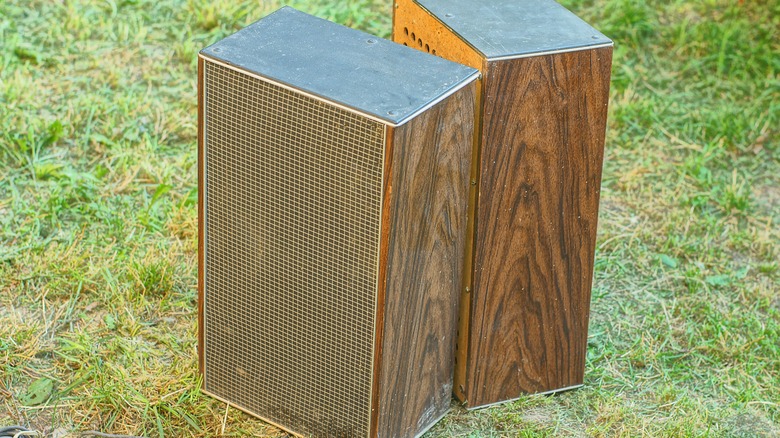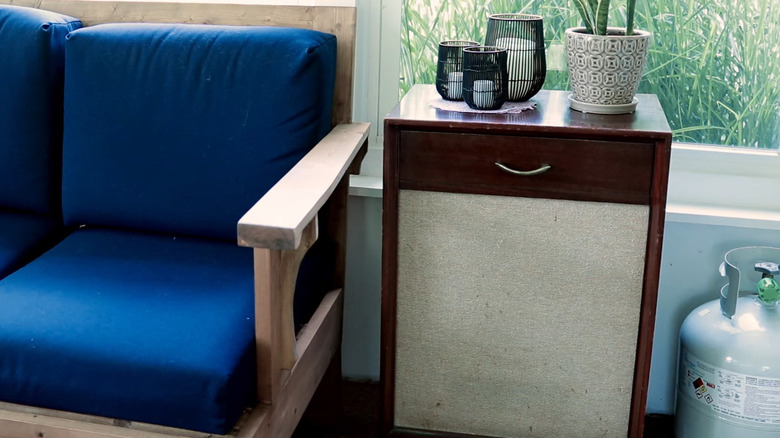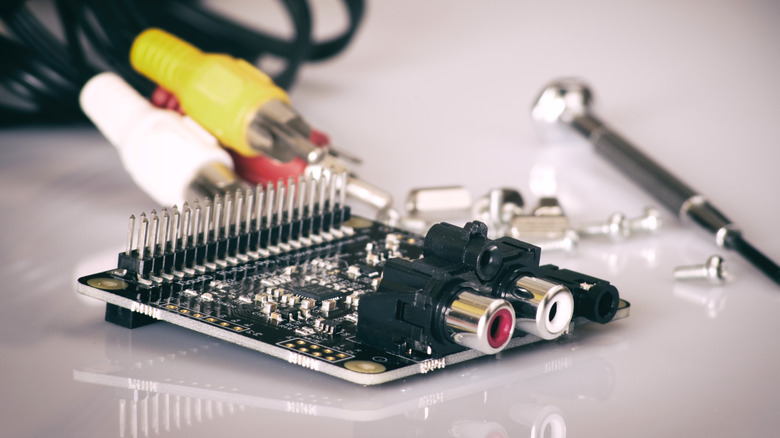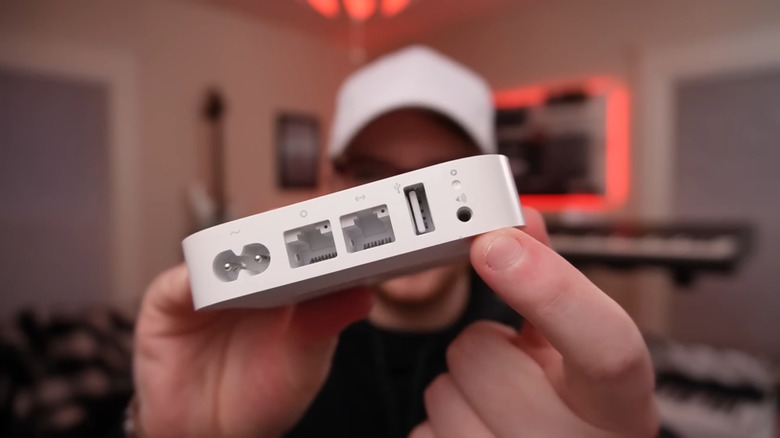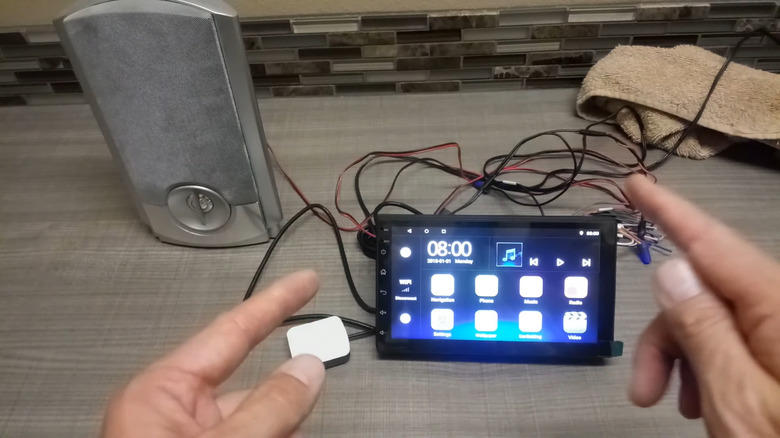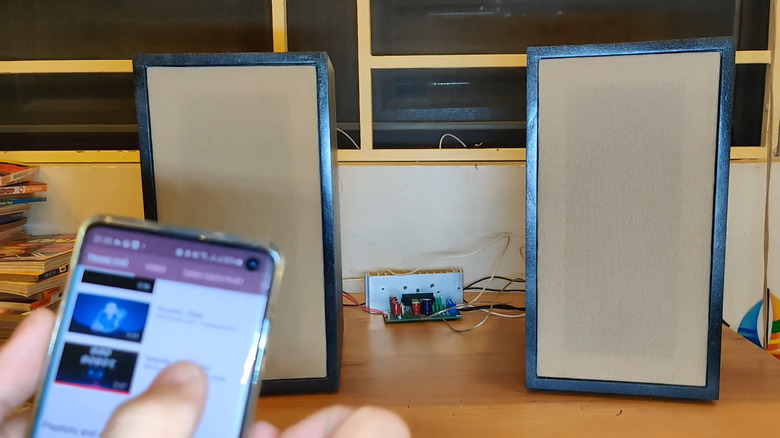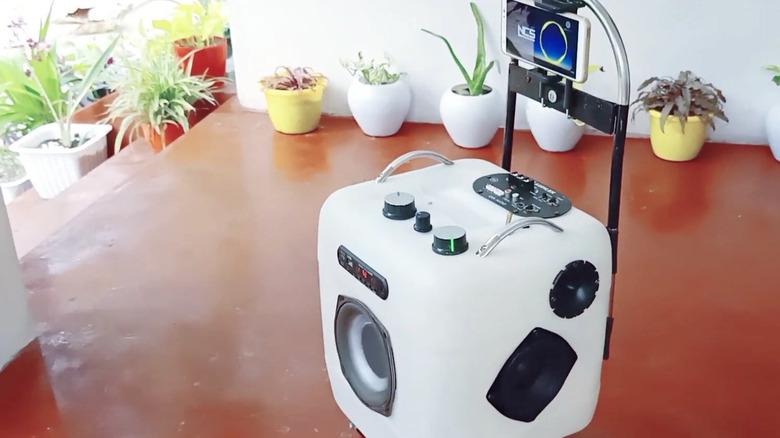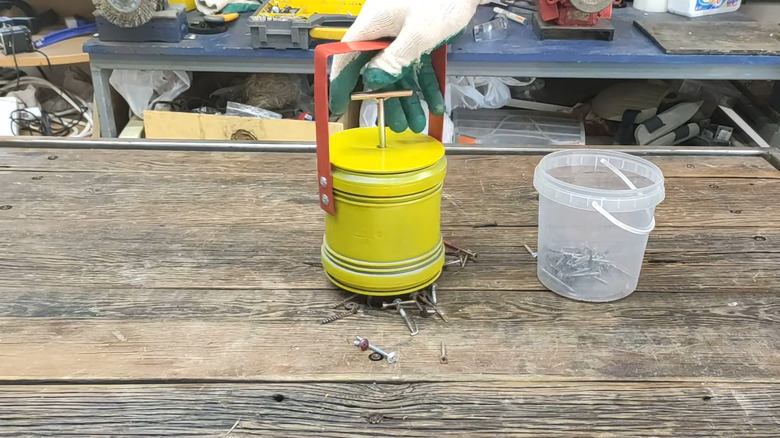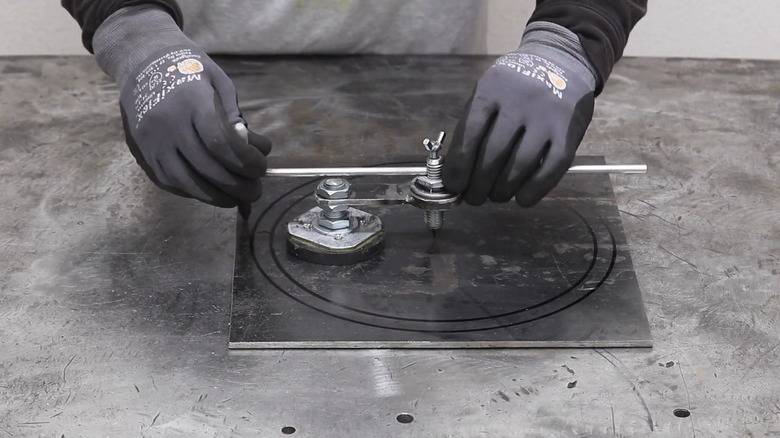Take Old Speakers From Trash To Treasure With These Creative Ways To Repurpose Them
Old speakers are one of those things no one knows how to place a value on. Assuming they work, they're obviously worth something, and it would be a shame to just toss them. And there might be no point in overburdening your local thrift store, already bursting at the seams with bread machines and old speakers, with another set of computer speakers or the bookshelf speakers from an old Magnavox stereo. One way to save and integrate your old speakers from the ignominy of the landfill is to upcycle them into something better, more functional, or just plain more interesting.
Some of these hacks turn old speakers into entirely new objects unrelated to amplifying sound. But some make the speakers into speakers for which you actually have a purpose. Doing this implies that what you're trying to rescue is worth saving, and that is by no means a given. Whether speakers sound good is a complex set of factors that starts with components and materials and ends up as raw frequency response, compensated frequency response accuracy, soundstage characteristics, and dynamics. If those things matter to you or even make sense, you'll want to start with (and possibly repair) a good set of speakers. If you're trying just to give some mediocre old speakers a little more useful life, almost any speakers will do for most of these projects. And if you are just trying to reduce solid waste or see what you can make out of something unrelated, we have you covered as well.
Console upgrade
Our tour of speaker upcycling begins with an extraordinarily well-done console created by TikTokker @madisonvozzo with a $50 pair of AAL speakers and some 1-by-12 lumber. How it became extraordinary is more the result of a good eye, or perhaps alchemy, than anything attributable to the individual pieces. AAL speakers are suspect on a good day but are sometimes well-reviewed by non-audiophiles. The table is otherwise simply made up of a rectangular box open at the front and back, supported at each end by the speaker itself. To this, @madisonvozzo has added hairpin legs and a nice finish.
The result, with the fabric grilles off and a record player atop the table, the disguised speakers look, at first glance, like nothing so much as a midcentury console. In several ways, this effect is nothing short of an upcycling ninja move. It relies on the speakers themselves (and construction adhesive) for rigidity. (Why she thought to protect the speaker cabinets from screws but didn't mind slathering them in glue is a question that goes unanswered.) Removing the grille fabric leverages the retro wood-grain cabinets. In most contexts, you'd probably find yourself trying to hide such a dated look, but it works in this faux-vintage context, and the visible drivers add details and visual interest otherwise missing from a minimalistic wood box.
Bluetooth speaker with pre-fab components
The most popular project for old speakers might be converting them to Bluetooth-enabled devices so that you can stream music (or podcasts, or whatever) to them wirelessly from your phone, PC, etc. There are dozens of ways to go about this — mostly variations on adding a Bluetooth-capable amplifier, borrowing a circuit board from another device, or rolling your own with a single-board computer and whole-house audio software. The catch is that with larger speakers and the latter two options, you'll usually need to add an amplifier to the setup since the output of the SBC and many Bluetooth speakers will starve larger speakers. However, if you're adding a store-bought Bluetooth amplifier, you can match the amp to your speakers from the outset.
This is exactly what YouTuber @MerwinMusic does in adding a Bluetooth amplifier board, similar to this DAMGOO Bluetooth Amplifier Board, to a cool old end-table cabinet. The process is almost self-explanatory once you take a look at the amplifier itself. Speaker wires run from the amp's output to the driver. The power supply runs through a hole drilled in the bottom. And since it's only for Bluetooth, there's no input to worry about. You could easily accommodate analog input, of course, by adding a panel-mount RCA, ⅛-inch, or ¼-inch jack to the back. Of course, you could also salvage the Bluetooth receiver from another device and use it instead to save the $19.99.
DIY smart Bluetooth speakers
You can, of course, overdo just about anything, and one sure way to overdo a thing is with a Raspberry Pi or a similar single-board computer. Software exists to turn most Raspberry Pis, including older ones and the tiny Raspberry Pi Zero, into full-blown home audio devices you can connect to just about any computer. This is a whole other order of complexity, though, and there are a few ways to get there. But the Raspberry Pi Imager, the software necessary to put an operating system on your Pi, comes pre-configured for three capable audio streaming platforms: Volumio, the moOde audio player, and piCorePlayer. The moOde audio player comes with all the usual streaming options, plus tons of streaming radio channels and many, many features.
Getting a signal out of a Pi and into your speaker cabinet is a little trickier than with a Bluetooth amp. You'll need an amplifier, for starters. The next item to purchase is a digital-to-analog converter (DAC) HAT for your Pi. (It's called a hat, presumably because it's something you put on top of your Pi.) Connect everything with the speakers and the requisite power supplies, and you have a great whole-house audio setup a bit cheaper than a Sonos.
Add AirPlay 2
If you're a staunchly Apple person, maybe you really only want the ability to use the AirPlay 2 streaming standard, in which case YouTuber Dylan Macintosh (@dylanmacintosh) has a novel way of getting that done. He bought a used 2012 Apple router (specifically, an AirPort Express Base Station A1392) with a ⅛-inch headphone jack on the back. He used it to provide an AirPlay output to his favorite speakers. It's a little more complicated than that, but only a little. Because the audio coming out of the AirPort Express is line level, you'll need an amplifier of some sort to connect it to your speakers.
The trick here is to skip the router capabilities of the AirPort Express and simply connect it to your amplifier or receiver and your Wi-Fi network. This will instantly make streaming to that receiver and its speakers available from any AirPlay-capable mobile app. But wait; what if all this is too polished, and you want to amplify your AirPlay signal while adding a little grit to the whole affair? Well, we have an idea for that, too. Just beware of the worst places to put smart speakers.
Add a car stereo
If you have an old but working car stereo lying around, you can get its signal (including capabilities like Bluetooth) to your speakers by simply wiring it up in your garage, living room, or wherever. YouTuber Hursty's Garage (@hurstysgarage) shows you how with a project that works with modern touchscreen car stereos, as well as with those old-school car stereos you're probably thinking of. Being an automotive device, it will need a 12-volt DC adapter, and there won't be one attached to the stereo when you remove it from whatever car you're dooming to silence. @hurstysgarage is using a 3.5-amp adapter, able to send 42 watts to his speakers. Match your output to your speakers' capabilities.
Hooking everything up is relatively simple. Cut off the barrel plug from the DC adapter and strip the ends of the wires. If they aren't already present, add stripped speaker wires to each speaker. Looking at the back of your car stereo, you're likely to find a wiring harness with a lot of connections available. Fortunately, these are standard colors on newer stereos, but consult a manual for your model if you have trouble.
Bookshelf speakers from old TV speakers
If you've ever thrown away an old flat-panel TV without any concern for what you might be able to salvage from it, this hack is probably not for you. But if you're the type to take apart things and store the bits and bobs in sorted boxes or bins for future projects, you might have some old television speakers lying around that can make decent bookshelf speakers with just a little effort. YouTuber @kentthoi walks you through the project, starting with building the speaker cabinets from medium-density fiberboard (using a homemade mini table saw, no less). The details depend on the look you want and the dimensions of your TV speakers, of course. The real fun starts after the cabinet is done.
@kentthoi adds binding posts for positive and negative wires to each of the speaker enclosures, then solders wires from the binding posts to the terminals on the drivers. Add acoustic foam or fiber to the inside of the back panels and some dampening tape where the back panels touch the enclosures to avoid vibration and rattling. When he's all done, he connected the speakers to a DIY amplifier built with an amplifier chip used in car audio systems. It's a lot of work to save some old TV speakers, but it does look like a fun project.
Trolley speakers
What, you might be asking yourself, are trolley speakers? Simply put, they're portable speakers on wheels that a DJ or host might wheel to a party where a sufficiently loud entertainment system isn't available. This implies, of course, that trolley speakers are a bit larger than those of a bookshelf or computer system. YouTuber @MrTEStDoSE builds one from what appears to be an old plastic coconut oil jug, which he cleans up and outfits with the usual array of speaker-related goodies: a small 12-volt lead-acid battery; an AC/DC transformer; a toggle switch; male and female barrel connectors for the transformer; a stereo amplifier board and Bluetooth module; and a car audio control panel and subwoofer amplifier that includes inputs, output, a volume pot, and a crossover. These all serve five speakers mounted in the sides of the oil can, including a subwoofer. The package is structured by the oil can, casters and a couple of stainless steel drawer pulls. An old chair is dismembered, and its back is used as the handle when rolling the trolley.
Magnet with release
Sometimes, a speaker is just a speaker, and sometimes, it's really a magnet with a day job. Depending on your needs, you might find it useful to give your speakers a new career that makes other use of their magnetic personalities. This is when things get really interesting in the realm of old speaker projects. These videos are always interesting for their fabrication techniques, if nothing else. This one by YouTuber Performer of Ideas (@Performerofideas) shows you how to efficiently disassemble a speaker to extract its magnet, then weld this to a long bolt.
This is housed inside a plastic European-style solid waste pipe connector with caps on each end. The bolt serves as a handle to pull the magnet away from the bottom of the housing. The resulting tool is a magnetic screw and nail collector that allows you to simply pull its handle to move the magnet away from the plastic, causing the screws and nails to fall away into a bucket or whatever container you prefer.
Circle-drawing jig
When you're digging around for ideas for using those big speaker magnets, remember that magnets can pick things up, but can also hold things down. YouTuber AX Creates (@axcreates_official) has managed to use a speaker magnet to hold down something moving, which is even more interesting. It's a circle-drawing jig for metal fabricators (or, perhaps, anyone wanting to draw an accurate circle on steel). AX Creates offsets the center point on an arm that extends away from the magnet, then uses that center point as the center pivot for the marker holder that orbits around it and draws the circle.
Welding is pretty much unavoidable for this project, and if that's not your cup of slag, this is still an interesting enough project to study. The design is interesting, and the implementation is thoughtful. It was built entirely using scrap except for a few cheap components like a roller bearing, the bolt that serves as the pivot point, and a few other simple components.
